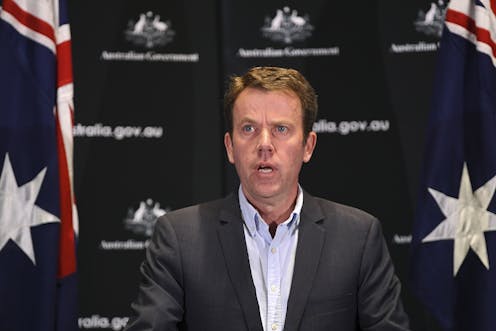Free childcare ends July 12, with sector losing JobKeeper but receiving temporary payment
- Written by Michelle Grattan, Professorial Fellow, University of Canberra

Free childcare will end on July 12, with the government saying it has “done its job” and demand is now increasing for places as the economy is reopening.
The system will return to the previous mean tested childcare subsidy scheme but with some transition funding for the sector and help for parents whose circumstances have been hit by the pandemic.
JobKeeper will end from July 20 for employees of providers, but there will be a $708 million in funding for services to replace JobKeeper from July 13 until September 27.
This funding will pay childcare services 25% of the fee revenue they received before COVID saw the sector crashing.
Two conditions will be imposed on services as part of the transition funding. Fees will be capped at the level they were in late February, and services will have to guarantee employment levels to protect staff who will move off JobKeeper.
The government will ease the activity test until October 4 to support families whose employment has been affected by the pandemic. During this time, these families will be able to receive up to 100 hours a fortnight of subsidised care.
Education Minister Dan Tehan said on Monday “this will assist families to return to the level of work, study or training they were undertaking before COVID-19”.
The removal of free childcare will be a big first test of the political reaction to the government winding back COVID emergency help.
The government’s announcement will also test the fallout when JobKeeper assistance, which was set to run until late September, is taken away in certain circumstances or replaced by industry-specific assistance.
The JobKeeper program in general is currently being reviewed, with the results made public in late July, when the government gives an economic and fiscal update.
The emergency free childcare package was brought in because the sector was experiencing mass withdrawals of children, which threatened its ability to continue providing care, especially for the children of essential workers.
The government budgeted for its three month package to cost $1.6 billion, including the JobKeeper payment. It had left open the possibility of an extension.
Asked for the difference between continuing JobKeeper and moving to the transition payment, Tehan said this was still being worked out, but the transition measure would “probably be a tiny bit less than what JobKeeper would be”. But he said the sector preferred the transition payment because “it spreads more equitably the support right across the sector”.
Tehan said a review of the child care relief package had “found it had succeeded in its objective of keeping services open and viable, with 99% of around 13,400 services operational” on May 27.
“Because of our success at flattening the curve, Australia is re-opening for business and that means an increase in demand for child care places, with attendance currently at 74% of pre-COVID levels.”
Labor’s shadow minister for early childhood education, Amanda Rishworth, said the decision could “act as a handbrake on the economy. If women and families are not able to access affordable childcare, how are they going to get back to work?”
Australian Greens education spokesperson senator Mehreen Faruqi labelled the decision “an anti-women move”.
“We know that a significant proportion of families currently accessing free childcare will now be forced to reduce their work days or completely remove their little ones from care. Let’s be honest: it will mostly be women who are forced out of work now,” she said.
The Parenthood advocacy group said thousands of parents would have to take their children out of early childhood education and care because they would not be able to afford it.
Authors: Michelle Grattan, Professorial Fellow, University of Canberra



